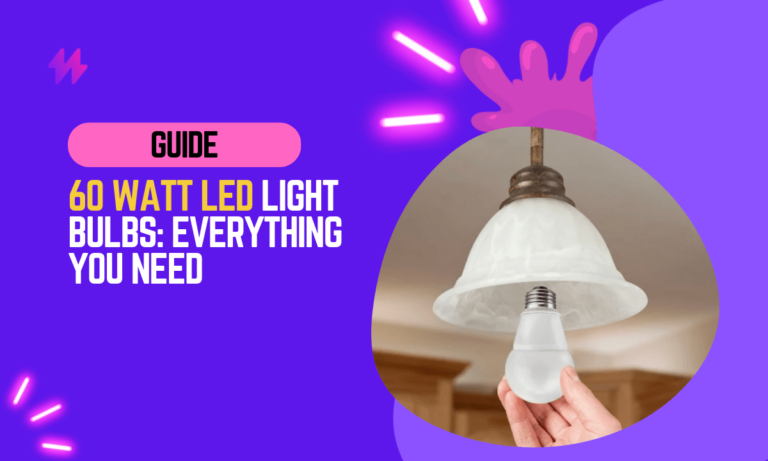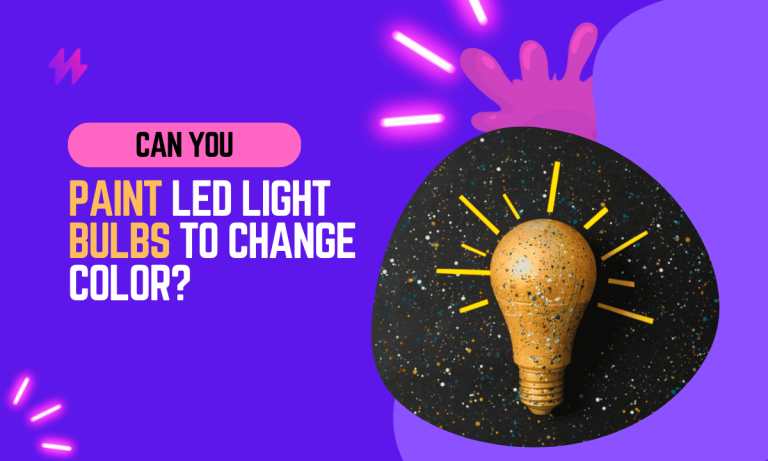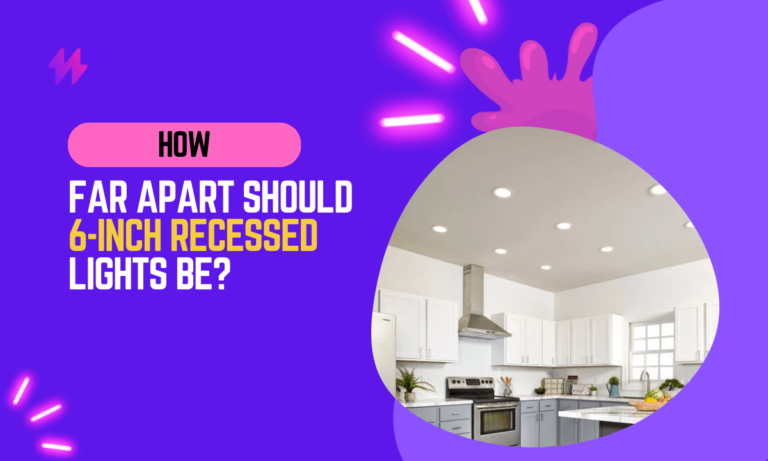How to Dim A Light Bulb? 6 Effective Ways
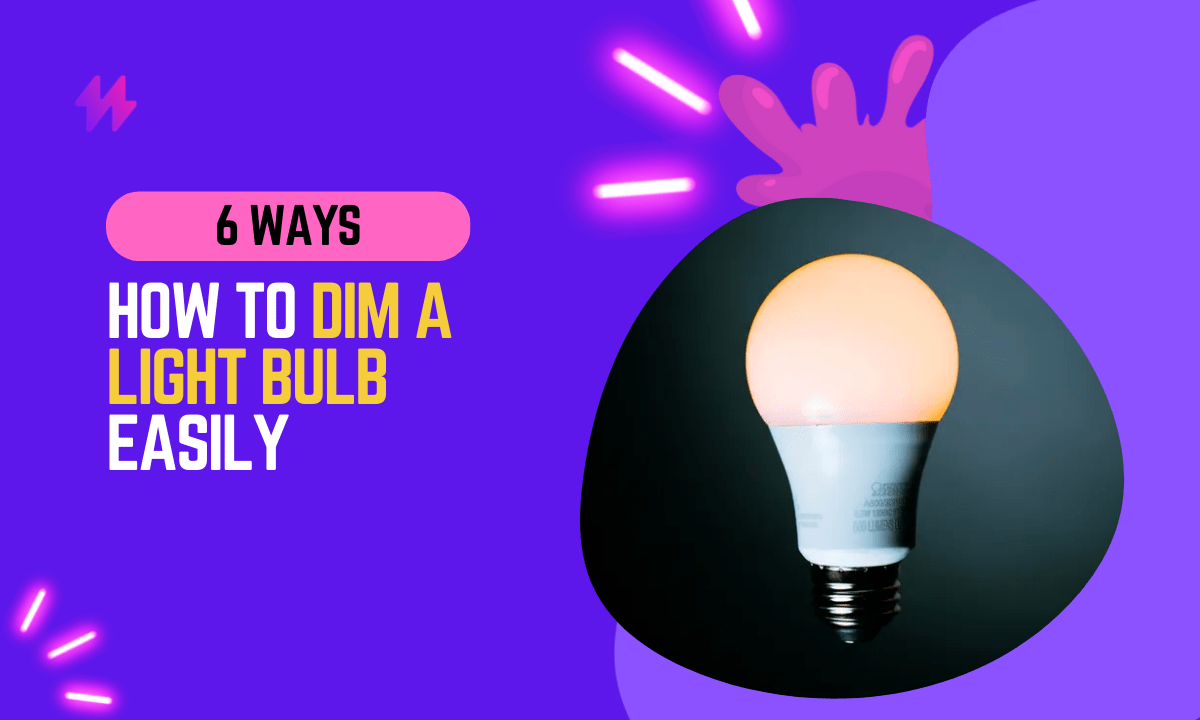
Dimming a light bulb goes beyond mere functionality; it’s an art that allows you to control the ambiance of a space, adding a touch of warmth or creating an intimate atmosphere.
In the ever-evolving realm of home lighting, the ability to control the intensity of your bulbs is a game-changer. “How to Dim A Light Bulb” is a question that often arises as people seek versatile and energy-efficient solutions to enhance their living spaces. Dimming not only contributes to energy efficiency but also enhances the lifespan of your bulbs. Moreover, the aesthetic appeal of a softly lit room can significantly impact your mood and overall experience.
In the article, we will look into six creative and practical ways to dim a light bulb, ranging from adjusting the voltage to using specialized accessories to achieve the desired level of illumination and shedding light on both conventional and creative approaches.
Whether you’re aiming for cozy atmospheres or wish to optimize energy consumption, these techniques offer a spectrum of possibilities.
6 Ways on How to Dim a Light Bulb
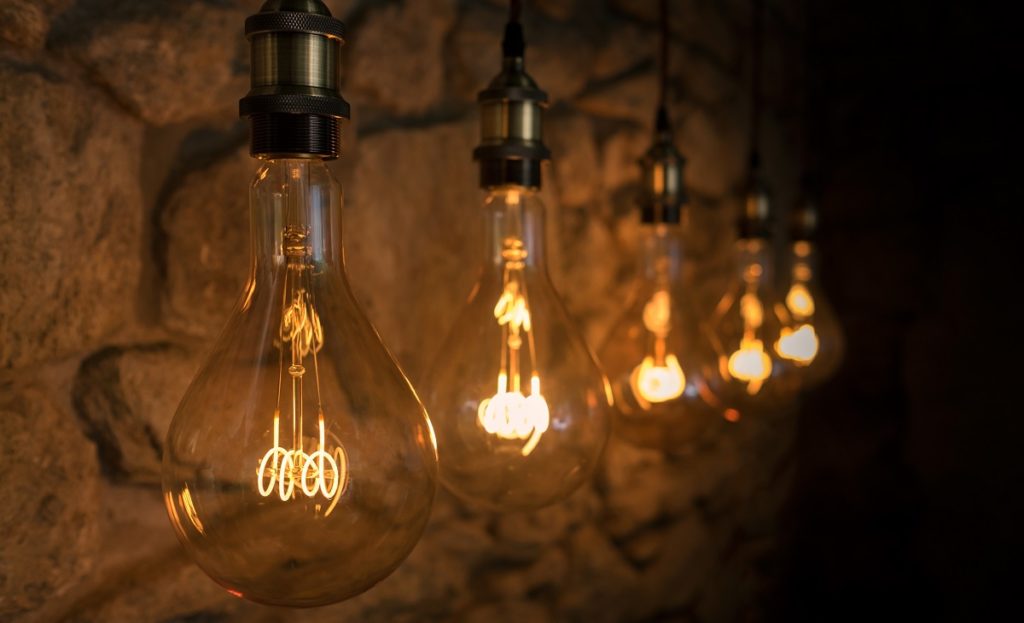
Let’s dive into the intricacies of dimming and discover how to transform the mood in your living spaces with just a flick of a switch.
Unlock the secrets to ambient illumination with our guide on ‘How to Dim a Light Bulb.’ From voltage adjustments to creative covers, discover versatile methods to tailor your lighting to perfection.
Decreasing the Voltage
Dimming a light bulb by decreasing voltage involves adjusting the electrical power supplied to the bulb. This method capitalizes on the correlation between voltage and light intensity, allowing users to control brightness levels.
When a light bulb receives an ample amount of voltage from the power source, it is designed to emit a bright light. To diminish the brightness of the light bulb, you can lower the voltage supplied by the power source. By doing so, the bulb will receive less voltage, resulting in a reduction of light emitted.
Dimming through voltage reduction requires careful consideration of safety measures. Users must be aware of potential risks such as flickering, overheating, or damage to the bulb.
Using Plastic or Glass Holders
Placing plastic or glass holders around a light bulb serves as an effective method for diffusing and dimming the emitted light. These holders scatter and soften the light, creating a more subtle and ambient illumination. There are various types of holders available, each with its unique characteristics.
Numerous light bulb holders function as comprehensive covers for the bulb. If you wish to avoid a substantial reduction in light output, opting for a plastic or glass holder is a viable solution. These holders don’t completely diminish the light; rather, they slightly reduce light intensity by introducing an upper layer in front of the light bulb.
Using Heat-Resistant Glass Paint
The third method involves painting! Applying heat-resistant glass paint is a creative approach to achieving a dimming effect. By applying paint to the light bulb, you create an additional layer, resulting in a less intense light output.
If you’ve chosen to paint your light bulb, it’s crucial to ensure that the paint can withstand the heat generated when the bulb is illuminated. Regular acrylic or oil-based paint is unsuitable, as the heat can cause the bulb to burst. Opt for heat-resistant glass paint for a safe and effective solution.
To begin the painting process, the initial step is cleaning the light bulb with rubbing alcohol. Soak a cotton ball in rubbing alcohol and thoroughly clean the bulb to create a clean, dust-free surface for effective paint adhesion. Alternatively, you can use soap and water, allowing the bulb to air-dry for 1-2 minutes.
After the cleaning process, position the bulb in a way that facilitates easy painting with a small brush. Allow at least an hour for the air-dry paint to completely dry after finishing the painting process. It’s essential to refrain from touching the bulb until it has dried entirely.
Evaluate the effect after the first layer is complete and determine if additional coats are needed for the desired appearance. If so, allow each layer to dry thoroughly before applying the next coat.
You can also dim an LED bulb with a capacitor, here’s a video tutorial on how to dim a light bulb!
Using a Diffuser Foil
Diffuser foil plays a crucial role in softening and diffusing light, contributing to an overall dimming effect. It works to create a more subdued and evenly spread illumination.
Diffuser foils are designed to scatter light, and their placement in front of a light bulb can diminish its brightness, depending on the installation configuration. However, using a diffuser in this manner is a temporary solution and should be approached with caution.
This method should only be employed under extreme circumstances and with low-wattage bulbs, typically those with only a few watts. Incorrect implementation could lead to heat buildup, and in the worst-case scenario, the bulb might even be at risk of catching fire.
Note: This approach should only be considered at one's own risk and with utmost care.
Use A Dimmer
Many light fixtures often produce excessive brightness, making the use of a dimmer advisable to adjust the light output as needed. Third-party dimmers are available for purchase at local hardware stores, offering a modifiable solution that can be applied to your light bulb for brightness control.
It’s essential to note, however, that this approach carries a potential risk of damaging the light bulb or rendering it completely nonfunctional. Therefore, I recommend pursuing this method only if you possess the necessary expertise and understanding of the process. Caution and knowledge are key when considering this route.
Also read: Halogen vs LED Lights: Which is the Better Lighting Choice?
Advantages of Dimming a Light Bulb
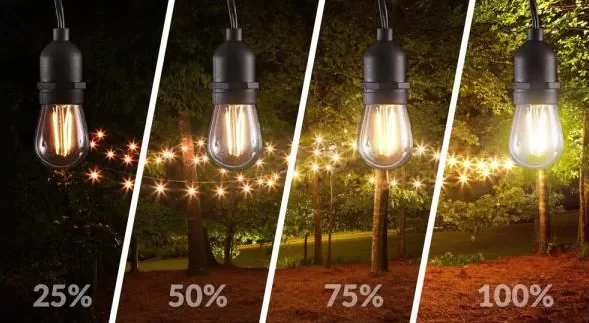
Dimming a light bulb offers a range of benefits, extending beyond the simple adjustment of brightness. This control over illumination provides both practical and aesthetic advantages, making it a valuable feature in various settings. Here are some key advantages of dimming a light bulb:
- Energy Savings: Dimming a light bulb reduces its power consumption, leading to energy savings. This not only contributes to lower electricity bills but also aligns with sustainable and eco-friendly practices, reducing overall energy consumption.
- Extended Bulb Lifespan: Lowering the brightness of a light bulb can significantly extend its lifespan. The reduced stress on the filament and other components helps minimize wear and tear, ultimately leading to fewer bulb replacements and less waste.
- Customized Ambiance: Dimming provides the ability to tailor the ambiance of a space to suit specific moods or occasions. Whether creating a cozy atmosphere for a quiet evening or brightening up a room for a lively gathering, dimming allows for versatile lighting scenarios.
- Improved Visual Comfort: Bright lights can sometimes cause discomfort, especially in spaces where softer lighting is more appropriate. Dimming allows for adjustments that enhance visual comfort, reducing glare and creating a more pleasant environment for various activities.
- Better Sleep Quality: In spaces where relaxation is essential, such as bedrooms or living rooms, dimming the lights in the evening promotes a conducive environment for winding down. This can contribute to better sleep quality and an improved overall sense of well-being.
- Adaptive Workspaces: In offices and workspaces, dimming allows for adaptable lighting conditions based on tasks and preferences. Brighter lighting may be suitable for focused work, while dimmer settings can create a more relaxed atmosphere during breaks or collaborative sessions.
- Reduced Glare and Eye Strain: Dimming helps reduce glare and eye strain, particularly in areas with reflective surfaces or where concentrated, bright lighting is not ideal. This is especially beneficial in spaces like dining rooms or home offices.
- Cost-Effective Smart Lighting: With the rise of smart lighting systems, dimming features can be integrated into automated setups. This allows for scheduled adjustments, occupancy-based controls, and remote management, offering a cost-effective and efficient way to manage lighting.
- Environmental Impact: By reducing energy consumption, dimming contributes to a lower carbon footprint. This aligns with broader sustainability goals, making dimming a conscientious choice for those seeking environmentally friendly practices.
You may also like: How To Tell If A Light Bulb Has A Camera?
FAQs on How to Dim A Light Bulb?
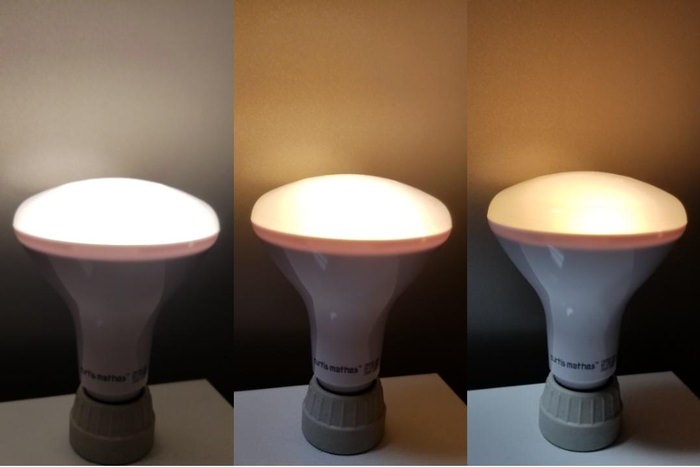
Q: Can I use any dimmer switch with my light bulb?
A: Not all light bulbs are compatible with every dimmer switch. It’s crucial to check the compatibility of your bulb with the specific dimmer switch you plan to use. LED and CFL bulbs often require dimmers designed for their technology.
Q: Are there safety concerns associated with dimming light bulbs?
A: Dimming itself is generally safe, but it’s important to follow manufacturer guidelines and use proper equipment. Overloading a dimmer, using incompatible bulbs, or improper installation can pose safety risks. Always prioritize safety when experimenting with dimming techniques.
Q: Can I dim any type of light bulb, including specialty bulbs like Edison bulbs or smart bulbs?
A: Not all bulbs are easily dimmable. Edison bulbs may have specific dimming requirements, and some smart bulbs may require specialized dimming controls. Always check the manufacturer’s recommendations for the specific bulb type.
Q: How does dimming impact energy consumption?
A: Dimming a light bulb reduces its power consumption, leading to energy savings. The amount of energy saved depends on the degree of dimming. It’s an effective way to conserve energy and lower electricity bills.
Q: Can I use regular paint to dim my light bulb?
A: Regular acrylic or oil-based paint is not recommended for dimming light bulbs. The heat generated by the bulb can cause these paints to deteriorate or even lead to the bulb bursting. For painting light bulbs, use heat-resistant glass paint to ensure safety and longevity.
Q: Are there specific safety precautions when covering a light bulb to dim it?
A: Yes, safety is paramount when covering a light bulb. Ensure that the chosen material is heat-resistant and won’t pose a fire hazard. Avoid covering the bulb entirely to prevent heat buildup. Always monitor the bulb during use and discontinue if any signs of overheating are observed.
Q: Can dimming light bulbs contribute to a longer bulb lifespan?
A: Yes, reducing the brightness of a light bulb through dimming can extend its lifespan. Lowering the intensity of light minimizes stress on the filament and other components, resulting in reduced wear and tear.
Q: Can dimming light bulbs affect the color temperature of the light?
A: Yes, dimming can influence the color temperature of light. Some bulbs may shift towards warmer tones at lower brightness levels. It’s essential to consider the color rendering properties of the bulb and how they may change with dimming.
Final Words
In conclusion, mastering the techniques for dimming a light bulb is essential for creating the perfect lighting ambiance in any environment, whether it’s for enhancing comfort, setting a mood, or conserving energy. The six effective ways outlined in the article, ranging from using simple dimmer switches to more sophisticated methods like smart home systems, provide homeowners and decorators with a variety of options to tailor lighting to their specific needs. Traditional dimmer switches are straightforward and cost-effective, allowing for easy manual control over light intensity. On the other hand, modern solutions like smart dimmers offer the added convenience of remote control via smartphones or voice-activated devices, integrating seamlessly into smart home setups for ultimate lighting customization and efficiency.
Moreover, understanding the compatibility of different light bulbs with various dimming methods is crucial to ensure smooth functionality and avoid potential issues such as flickering or reduced lifespan of the bulbs. LED bulbs, in particular, require compatible dimmers that can handle their lower power requirements. Incorporating advanced technologies like pulse-width modulation can also enhance the dimming capabilities of LEDs, providing more precise control over light levels and further reducing energy consumption. By carefully selecting and implementing the appropriate dimming techniques, users can significantly enhance the functionality and atmosphere of their spaces. This not only improves the aesthetic appeal and comfort of rooms but also contributes to energy savings and extends the life of lighting fixtures, reflecting both economic and environmental benefits.
By embracing the methods discussed in this article, you gain the ability to customize your lighting to suit every mood and occasion.

